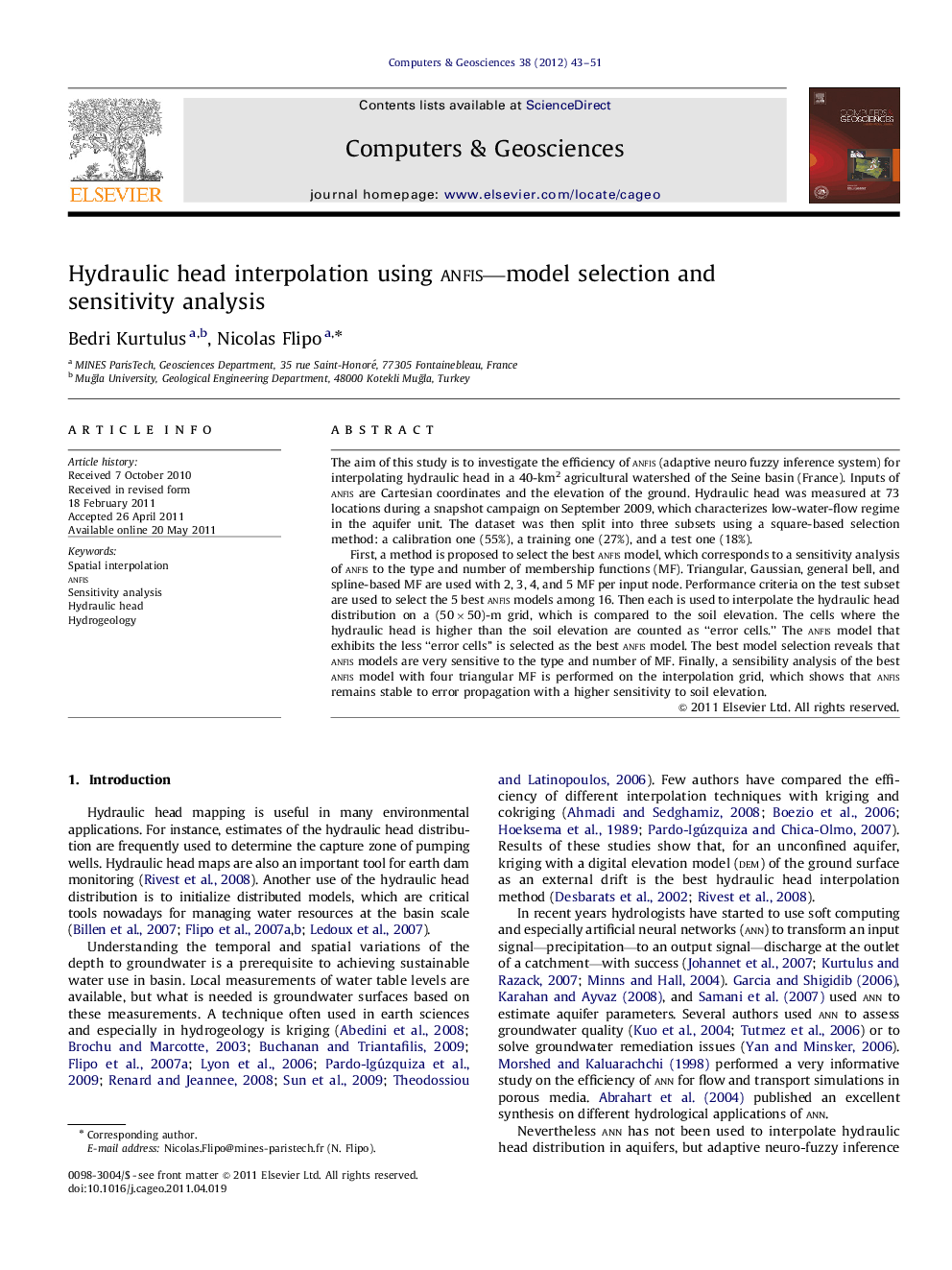| Article ID | Journal | Published Year | Pages | File Type |
|---|---|---|---|---|
| 507824 | Computers & Geosciences | 2012 | 9 Pages |
The aim of this study is to investigate the efficiency of anfis (adaptive neuro fuzzy inference system) for interpolating hydraulic head in a 40-km2 agricultural watershed of the Seine basin (France). Inputs of anfis are Cartesian coordinates and the elevation of the ground. Hydraulic head was measured at 73 locations during a snapshot campaign on September 2009, which characterizes low-water-flow regime in the aquifer unit. The dataset was then split into three subsets using a square-based selection method: a calibration one (55%), a training one (27%), and a test one (18%).First, a method is proposed to select the best anfis model, which corresponds to a sensitivity analysis of anfis to the type and number of membership functions (MF). Triangular, Gaussian, general bell, and spline-based MF are used with 2, 3, 4, and 5 MF per input node. Performance criteria on the test subset are used to select the 5 best anfis models among 16. Then each is used to interpolate the hydraulic head distribution on a (50×50)-m grid, which is compared to the soil elevation. The cells where the hydraulic head is higher than the soil elevation are counted as “error cells.” The anfis model that exhibits the less “error cells” is selected as the best anfis model. The best model selection reveals that anfis models are very sensitive to the type and number of MF. Finally, a sensibility analysis of the best anfis model with four triangular MF is performed on the interpolation grid, which shows that anfis remains stable to error propagation with a higher sensitivity to soil elevation.
► anfis model applied to hydraulic head interpolation. ► Methodology to select an anfis model. ► Sensitivity analysis to the type and number of membership functions. ► anfis is more sensitive to the soil elevation than to Cartesian coordinates.
